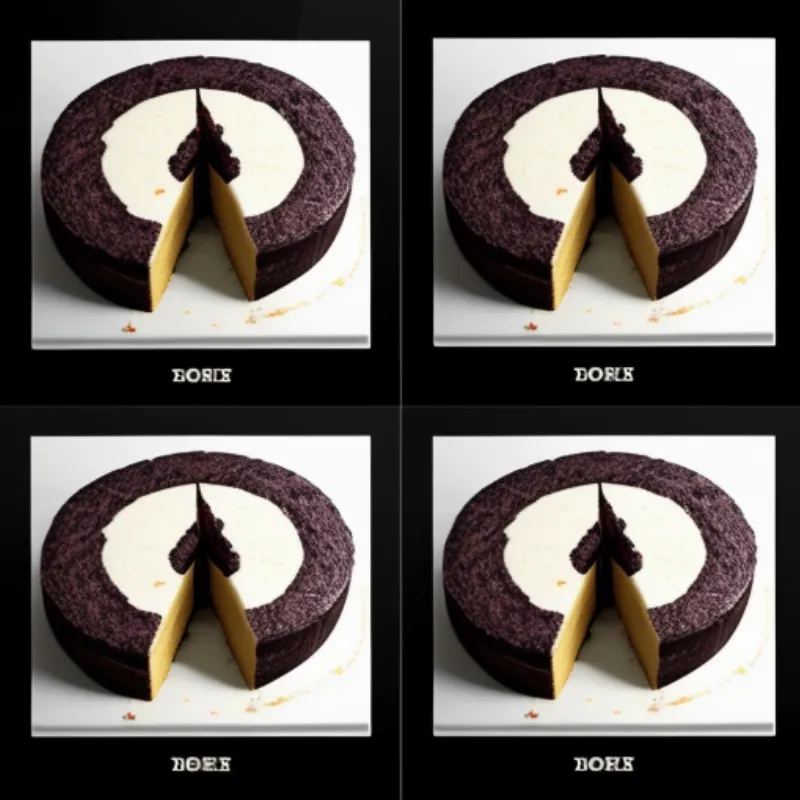Have you ever baked a beautiful cake, only to have it puff up in the center like a volcano during baking? This common baking problem, known as doming, can be frustrating, especially when you’re aiming for those professional-looking, flat cake layers for a stunning, multi-layered masterpiece.
Don’t worry! We’ve all been there. In this article, we’ll explore the secrets to preventing cake doming and share expert tips to achieve perfectly flat layers every time. Get ready to impress your friends and family with your newfound baking prowess!
Why Do Cakes Dome?
Before we dive into the solutions, it’s helpful to understand the science behind cake doming. The culprit? It’s often the heat!
When a cake bakes, the edges tend to cook faster than the center. As the outer edges set, the center continues to rise, creating that dreaded dome shape. Several factors contribute to this uneven baking, including:
- Oven Temperature: A too-hot oven can cause the outside of the cake to set too quickly, while the inside remains raw and continues to rise.
- Batter Consistency: A thick batter tends to trap air bubbles, leading to uneven rising and doming.
- Pan Material: Dark-colored pans absorb more heat, potentially leading to faster cooking of the edges.
How to Prevent Cake Doming
The good news? Achieving flat cake layers isn’t as hard as you might think! Here are some tried-and-true methods:
1. Invest in Cake Strips
Cake strips are your secret weapon for evenly baked cakes. These insulating bands are soaked in water and then wrapped around the outside of your cake pan before baking.
How they work: The damp strips moderate the heat distribution, allowing the cake edges and center to bake at a more consistent rate.
Expert Tip: “Don’t have cake strips? No problem! You can easily create DIY cake strips using strips of aluminum foil and paper towels,” says pastry chef, Emily Carter. “Simply dampen the paper towels, wrap them around the cake pan, and secure them with the foil.”
2. Control the Oven Temperature
As we learned earlier, oven temperature plays a crucial role in preventing doming.
Expert Tip: Invest in an oven thermometer to ensure your oven is calibrated correctly. “Ovens can vary in temperature, even if you set them to the same degree. An oven thermometer is a baker’s best friend for achieving consistent results,” advises baking expert, Michael Johnson.
3. Adjust Baking Time and Temperature
Sometimes, a slight adjustment to your baking time and temperature can make all the difference.
Expert Tip: “Consider lowering the oven temperature by 25°F and extending the baking time slightly,” suggests Johnson. “This allows the cake to bake more evenly, reducing the chance of doming.”
4. Don’t Overmix the Batter
Overmixing your batter can incorporate excess air, which can lead to doming.
Expert Tip: “Mix the batter until the ingredients are just combined,” advises Carter. “Overmixing develops the gluten in the flour, which can create a tougher, chewier cake.”
5. Choose the Right Pan Material
Light-colored, aluminum pans are ideal for even heat distribution.
Expert Tip: Avoid dark-colored pans, especially if you’re prone to cake doming. They tend to absorb heat more quickly, potentially leading to uneven baking.
 Preventing Cake Doming
Preventing Cake Doming
FAQs: Addressing Your Cake-Doming Concerns
Here are some common questions about preventing cake doming:
Q: Can I fix a cake that has already domed?
A: While it’s best to prevent doming in the first place, you can try leveling a domed cake once it has cooled completely. Use a serrated knife to carefully slice off the excess dome, creating a flat surface.
Q: Do I need to use cake strips for all types of cakes?
A: While cake strips are particularly helpful for preventing doming in layer cakes, you can use them for other types of cakes as well, especially those prone to doming.
Q: What if I don’t have cake strips and don’t want to make DIY versions?
A: If you don’t have cake strips, try lowering the oven temperature and extending the baking time slightly. Be sure to check for doneness using a toothpick.
 Cake Strips
Cake Strips
Conclusion: Baking with Confidence
Baking beautiful, flat cakes doesn’t have to be a challenge. By understanding the factors that contribute to doming and implementing the expert tips we’ve shared, you’ll be well on your way to creating stunning, professional-looking cakes.
So go ahead, embrace your inner baker, and whip up a delicious masterpiece. Don’t forget to share your baking triumphs (and even your baking mishaps!) with us in the comments below. We’re all on this baking journey together!
